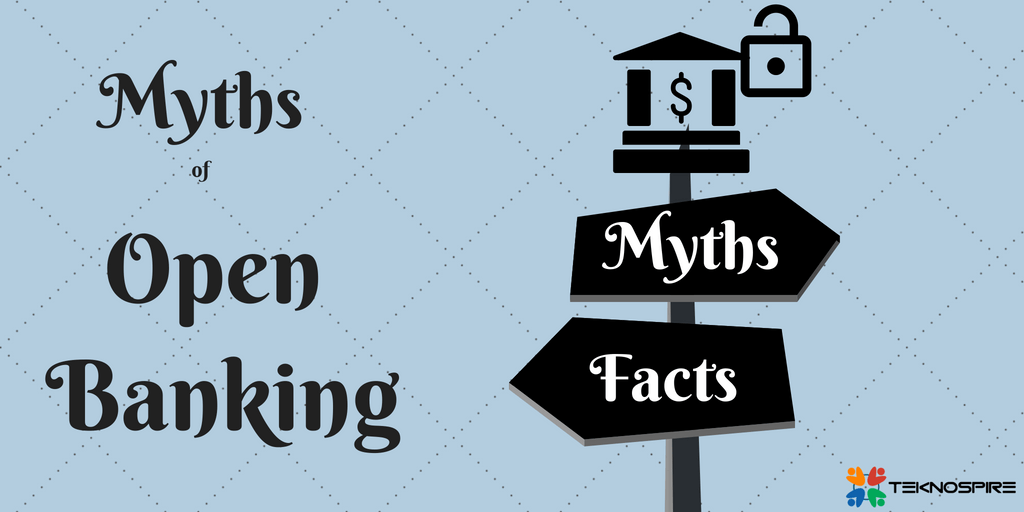Its just six months that PSD2 came into force, and the Open Banking Implementation Entity (OBIE) stats demonstrate that in June, there have been 1.2 million uses of open banking API’s, up from 720,000 in May. Another report from the Open Data Institute and PwC highlight that the Open Banking market by 2022 could be generating £7.2 billion. The research that included big banks, payment providers, technology vendors, consumers, SME’s across the UK stated that only 18 percent of customers know what open banking means, that would reach to 64 percent by 2022.
Conceptually, with small mob knowing about a concept, either rest of them are completely ignorant or have their perspective, this post is all about breaking those myths and shaking hands with Facts of Open Banking.
Myths Of Open Banking
The motive of the PSD2[ Revised Payment Service Directive] and Open Banking are same, geographically and technically [a bit] they differ. Here are the differences
| PSD2 | Open Banking |
| EU Region | UK initiative |
| Applies to Payment Accounts | Applies to Current Accounts |
No that’s not reassuringly true.
As per Open Banking regulations, Banks would be forced to make payment and account data available through secure API’s [Application Programming Interface], to offer customer more liberty and control in how/with whom they interact as their financial service providers. By enabling Open API, consumers could use exciting services offered by third parties.
So Bank and Banking services would still exist, Open Banking is just enabling a smoother interaction between a Bank and a Firm.
Interestingly, Open Banking could also be named as API Banking.
API [first used in the 1960s] or Application Programming Interface is defined as – a software intermediary that allows two applications to talk to each other. Each time you use an app like Facebook, send an instant message or check the weather on your phone, you’re using an API. So the API forms a base to any software of any sector viz Finance, Health, Manufacturing, Telcom, etc. Let’s pick an example –
A firm has an API that could be used as your money manager or analyze your spending habits; now this API need to communicate with another client who could provide him with that data.
Who has all the Banking/payment data? Banks? So this API could connect to Bank’s API [again only after the customer authorizes the firm to access the data] and now could serve as a money manager tool.
So this is how an API is now contributing to API Banking, that existed long before PSD2 or Open Banking Regulation was born.
So, the API with PSD2/Open Banking Regulation is now API Banking or Open Banking.
Be it PSD2 or Open Banking both initiatives make it clear that only “trusted third parties” can access customer account information and customer need to provide their consent even for these trusted third parties to obtain your information like transaction details, payments.

The motive of the initiative is to create competition thereby providing the best and innovative services to the customer at the best price. If the customer agrees to share their financial information with trusted third parties, they could gain insights to better offers, better financial products more control of their own money with new models to help them manage their finances effectively.
The fact is Open Banking would help third parties to access financial data [with customers consent] to be used for value-added services. So the Banks would remain as a licensed financial institution that receives deposits, make loans and offer services like wealth management, safe deposit boxes,etc.
So, yes third parties would have your Data with YOUR CONSENT from Banks, but they would not be turning into a bank. Hence Banks are here to stay. The organisations would be working in conjunction with core banking engine that cannot be replicated by a third party so easily. The newer tech companies are looking into giving more customer experience’s.
Though the concept is Open Banking, it is only targeted to individuals who avail banking. As mentioned earlier the initiative focuses on the customer needs by enforcing competition leading to the best and innovative services to the end user at the best price. If you still have doubts, you can read our exhaustive post that details on whether Open Banking is comforting to the customers or not.
Teknospire Breaking the Myths of Open Banking
Teknospire with an API driven model has been listed with Oracle marketplace and is available for the use of Payments. Teknospire has recently collaborated with Latin American APIs aggregator “Finconnecta” that is a FinForwardAccelerator to help inclusion and digitization. For more information on our products and services, please explore our website or contact us here.
Reference:
